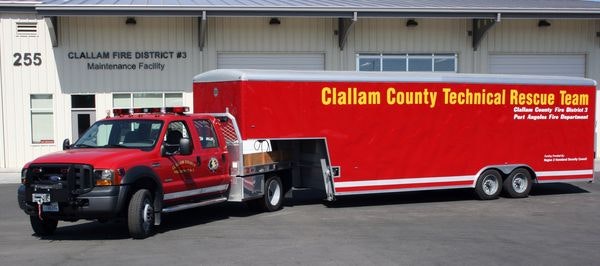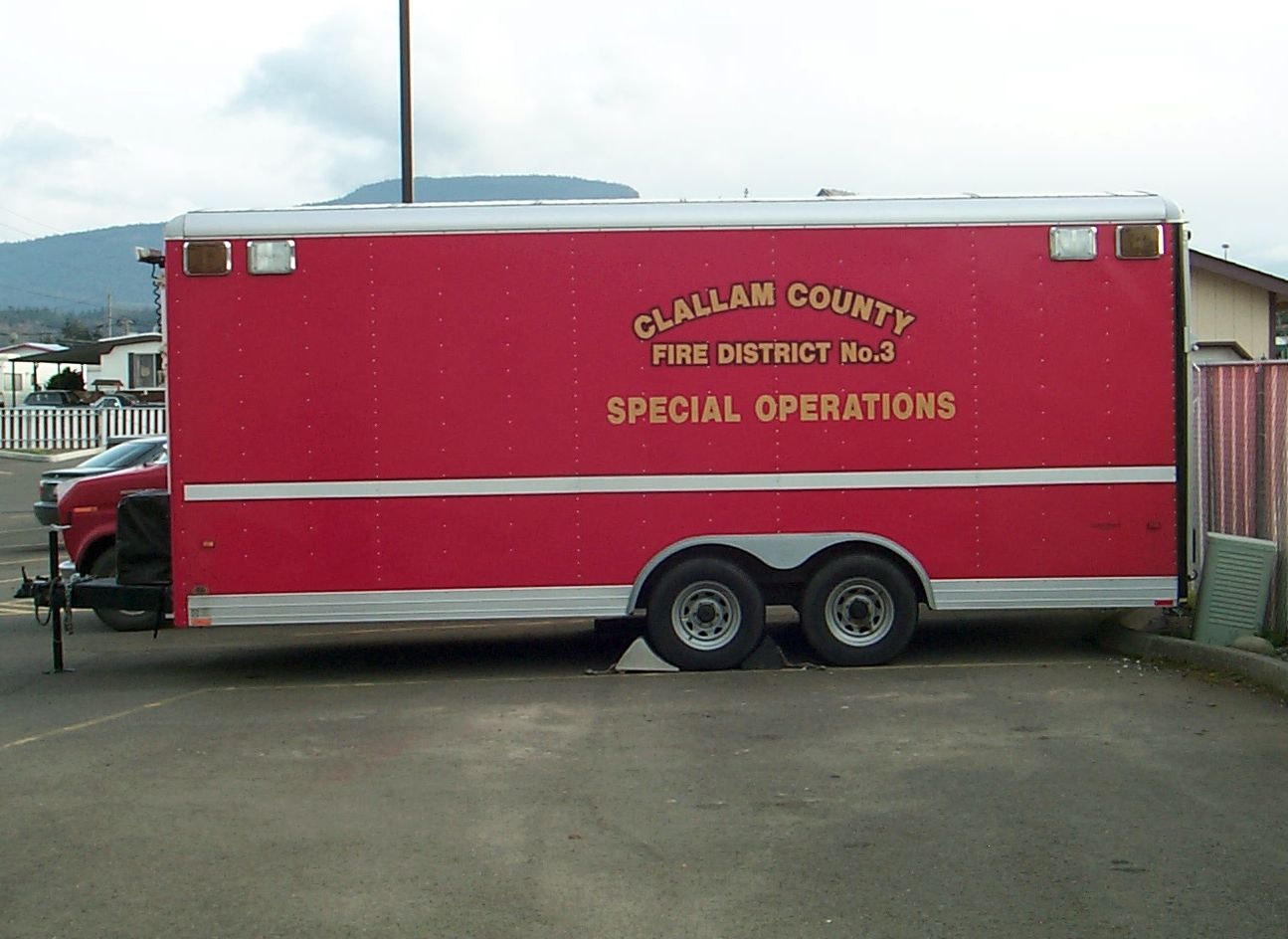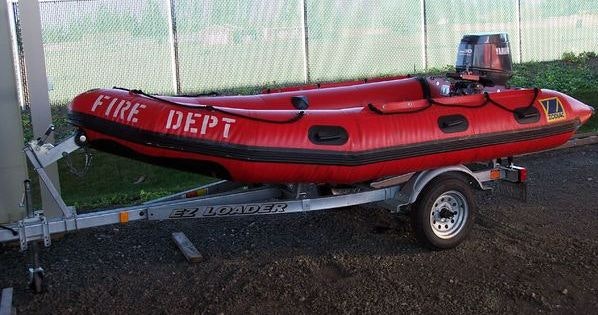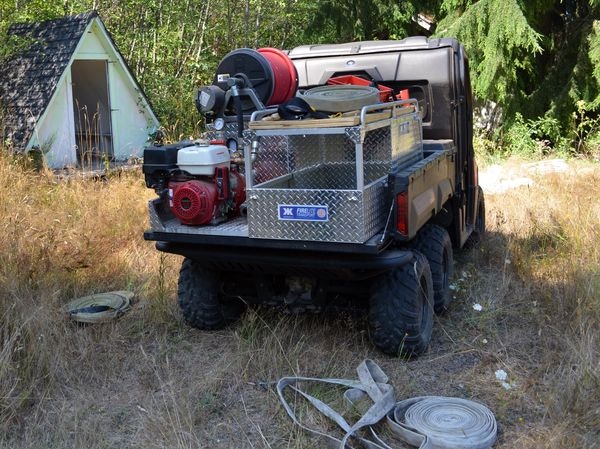Specialized Equipment And Apparatus
Fire departments within Clallam County face a unique challenge with resource capability. Where most departments can rely on neighboring departments for immediate assistance, we don’t have that luxury. The geographic nature of the Olympic Peninsula creates a form of isolation that significantly impacts the ability to simply call on neighboring agencies for assistance. Bordered by the Olympic Mountain range and the Strait of Juan de Fuca, access in and out of the County is limited to Highway 101 at both ends of the County. With only one way in, and with mutual-aid resources located far away, it can easily take several hours to mobilize essential resources. This is especially true with the specialized equipment needed to effectively perform a complex rescue, or to effectively manage a large-scale incident. Consequently, the Fire District must be much more self-reliant than most fire departments. To meet this challenge, the District maintains several specialized resources in order to be adequately prepared to face a broad range of emergency response challenges. Stored and the District’s Training & Maintenance Facility, these resources are readily available for response within the Fire District and double as regional resources for response throughout the County as well as to neighboring counties.

Mass Casualty Incidents (MCI): The potential of an incident resulting in a large number of injuries, ten or more, is real. Examples include a school bus collision, an active shooter incident, a hazardous materials release, a fire in a multi-unit residential care facility, a significant natural disaster, etc. Therefore, the District must have the capability to transport several patients. Our geographic isolation means the ability to mobilize a large number of ambulances within a reasonable time frame is limited. To address this, the District maintains a MCI bus, which is a converted school bus capable of transporting multiple patients with minor injuries.

Technical Rescue: The Fire District maintains a diverse collection of specialized rescue equipment that is loaded in a large trailer ready for deployment. The majority of this equipment was purchased with funds obtained through a series of US Department of Homeland Security grants. The trailer carries equipment for performing confined space, trench, rope, and swift water rescue; extrication from heavy machinery, urban search & rescue where people are trapped within a collapsed structure, and much more. The equipment includes highly sensitive listening, thermal imaging, and video equipment; listening sensors for locating trapped victims; specialized cutting equipment, lifting and shoring materials, stabilizing equipment, respiratory equipment, heavy rescue extrication tools, and much more.

Hazardous Materials: Funded through a series of US Department of Homeland Security grants, the Fire District has assembled a comprehensive cache of equipment specifically designed to support the mitigation of a hazardous materials incident. This includes the equipment needed to decontaminate multiple patients who have been exposed to a variety of chemical agents. The equipment is currently stored in a cargo trailer and a shipping container that can be loaded onto a trailer for transport.

Incident Command: Operated in collaboration with the Clallam County Sheriff's office, the Fire District hosts, operates, and maintains an Incident Command Vehicle (ICV). The ICV is stored at the District’s Training & Maintenance Facility. When called upon, qualified responders will mobilize and drive the ICV to the incident’s location. Upon arrival the ICV can be set-up to serve as a mobile field command center specifically to support management of large scale, multi-discipline, and/or complex incidents that warrant a Unified Command structure. The ICV is equipped with complex radio and satellite equipment to support the interoperability of multi-agency communications equipment.

Water Rescue: With a considerable amount of shoreline within the service area, the District needs to maintain the capability to perform water rescue within navigable waters. Therefore, in addition to swift water rescue equipment carried on the Technical Rescue trailer, the District maintains an inflatable Zodiac rescue boat. Typically housed at the District's Training and Maintenace Facility, the rescue boat is deployed on an as needed basis.

All Terrain: Given the range of diverse terrain that exists throughout the service area, responders often face issues of restricted and/or difficult access. This includes several miles of shoreline, the nearly five-mile long Dungeness Spit, US Forest Service access roads, the Olympic Discovery Trail, logging roads, etc. The UTV is frequently used to support community events and is often called upon to provide supporting access to emergency incidents.

To address this, the District maintains a Utility Terrain Vehicle (UTV). The vehicle is stored in a fully enclosed cargo trailer so it can easily be transported throughout the service area. The UTV has an open bed well suited for transporting equipment in and out of remote areas, The UTV is also equipped with interchangeable modules, one designed to support patient transport, the other being a mini-wildfire module. The wildfire module includes a small water tank, fire pump, and an assortment of wildfire hose and firefighting equipment. The modules can be taken on and off depending on the nature of the call.
